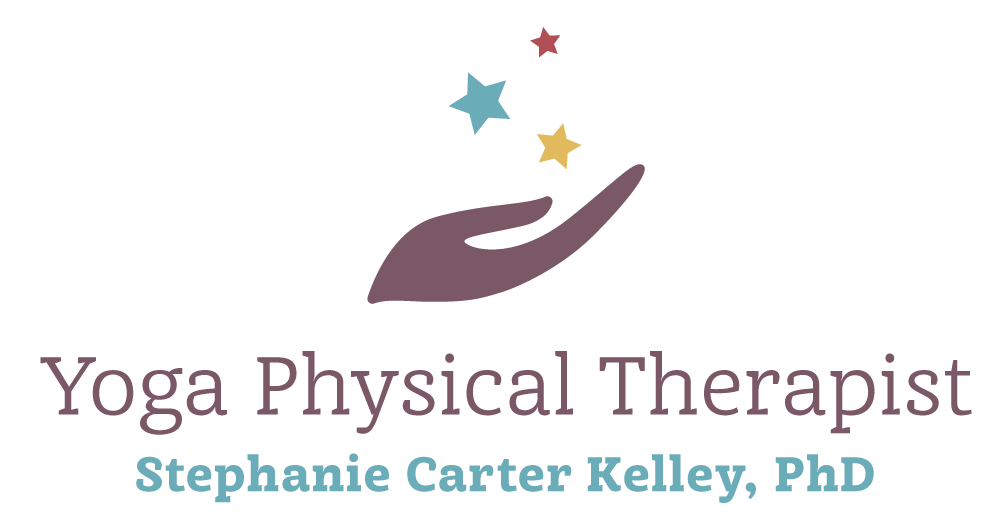Going into Extension Range of Motion of the Spine and Hips doesn't always feel good! And there are reasons for that. Most are due to the aging process of the spine and probably what you've done through your life to progress that aging process. In another Blog, "Educated Assumptions for Teaching Yoga for Spine Health", I talk about the normal aging process of the spine and how I create yoga programs and cue to the general population of folks that attend my classes. The position that I am most cautious about is extension because I respect the aging spine. However, I also think that it is the most important position and a motion we are losing due to our epidemic of sitting. As we age, we are stiffer and these postures are going to lead to permanent change unless we address it NOW.
In trying to describe precautions while going into extension, I will use my own spine. I have degenerative changes between L5 and the top of the sacrum (aka S1). This means that I have worn down the disc at that level and I have less height between L5 and S1. Less height means that I don't extend as much as I used to at that level. Here are a few pictures to show you what I mean:
Lumbar vertebrae and Sacrum with equal space between each level
Degernative Disc Disease
As I move into extension, that L5/S1 level comes to end range quicker and I feel a twinge of pain. Does that mean I should never go into extension? Let me say a resounding HELL NO!!! All the more reason to learn how to go into extension so that this level does not keep degenerating.
What it means is that I need to get my extension from other areas. In fact, I think the reason that L5/S1 broke down in the first place is because my years of sitting (thank you PhD and academic life!) stiffened my hips and thoracic spine, i.e. the areas above and below L5/S1.
This follows with the concept of regional interdependence. The body is going to move, and it is going to get that movement from where ever it can. If the thoracic spine is tight, then the lumbar spine needs to move more. If the hips are tight then the sacroiliac joints and lumbar spine must move more.
Pain in that area is my warning sign that I am at end of range for that level. I need to protect that area with a little flexion provided by my lower abdominal muscles and gluteal muscles, while extending in my hips and thoracic spine. It takes concentration and muscular control to achieve this. That is why I give the following cues in standing poses like Warrior 2, Triangle and Side Angle: "draw the tailbone down", "tighten your bottom", and "draw the lower belly up and in". All of these instructions are to create a little flexion in the lower lumbar region. I also instruct to NOT over-correct to flatten out the entire low back. You want to keep the natural lordosis of the low back if that is comfortable.
For some the excessive amount of extension in the low back demonstrated here would create pain during Warrior 2
I use similar cues to create hip extension while maintaining a "neutral" position of the low back. Most people are so tight in the front of the hip, that any pose with hip extension like Warrior 1, Low Lunge, and most poses on the stomach immediately create excessive low back extension.
The goal of these poses is first to NOT feel pain in the low back, feel EFFORT (not strain) in the lower abdominals, gluteus maximus and deep gluteal muscles, and to also feel a GENTLE stretch in the hip flexors and thoracic spine. Don't push into any pose and PLEASE ask for modifications when you feel pain.
I hope this eases some of that tension in your low back and keeps you moving! Let me know how it goes.
Namaste,
Stephanie











